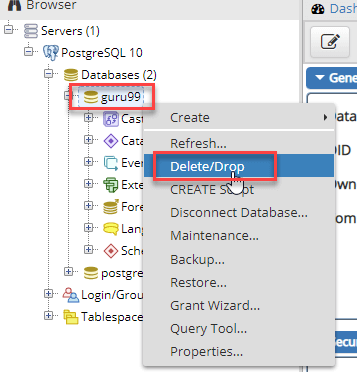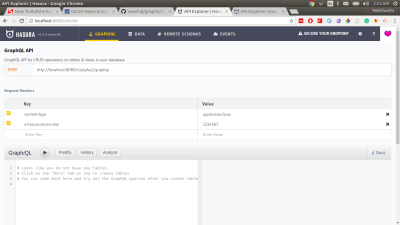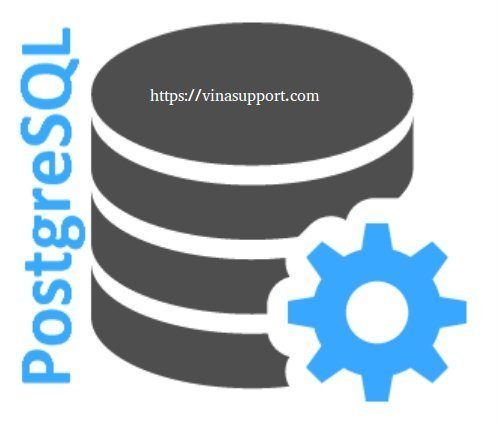Once a database is no longer neede you can delete it by using the DROP DATABASE statement. The DELETE statement returns the number of deleted rows. It may not the same as the number of rows specified by the condition in the WHERE clause because the table may contain a BEFORE DELETE trigger that does something else before deletion. If no row is delete the DELETE statement returns zero.

You are now connected to database testdb as user postgres. Credit where credit is due: I wrote the function, but think the queries (or the first one at least) came from someone on one of the pgsql mailing lists years ago. Notice the WHERE clause in the DELETE statement. To execute DROP DATABASE , at a minimum, a user must have CONTROL permission on the database.
Expand Databases, right-click the database to delete, and then click Delete. Do I need to write a macro for this? In order to connect to a database you need to know the name of your target database , the host name and port number of the server, and what user name you want to connect as. PostgreSQL client application. The following command connects to a database under a specific user.
Using Detach Database would not work for me with a database in recovery pending state. How do I empty MySQL database ? What SQL command needs to be executed in order to delete all (100s) of tables in MySQL database called atomstore? Database Administrators Stack Exchange is a question and answer site for database professionals who wish to improve their database skills and learn from others in the community. It only takes a minute to. RESTORE DATABASE dbname WITH RECOVERY the REPLACE Overwrite the existing database , do it only if you are sure you want to override your existing database as you mentioned you dont care to delete it.
RESTORE WITH RECOVERY is the default behavior which leaves the database ready for use by rolling back the uncommitted transactions. Pervasive PSQL is an ACID-compliant database management system (DBMS) developed by Pervasive Software. It is optimized for embedding in applications and used in several different types of packaged software applications offered by independent software vendors (ISVs) and original equipment manufacturers (OEMs). It is available for software as a service (SaaS) deployment due to a file-based. You have to specify a database before you can list the tables in that database.
U pgadmin -d kurz_prod This brings you to a psql terminal:. Each database has at least one data file (and a log file), but it’s not restricted to just one – it could have many data files. If you ever find yourself in the situation where you need to remove a data file from a database, you’ll need to empty that file first, before removing it. Deleting Data Using DELETE FROM Statement. DELETE TABLE statements delete rows one at a time, logging each row in the transaction log, as well as maintaining log sequence number (LSN) information.
SQL Server databases store their data and objects in files. Although this consumes more database resources and locks, these transactions can be rolled back if necessary. To create a normal user and an associated database you need to type the following commands.

Cause: That means, you are trying to drop a user owning a schema. Resolution: You can fix the issue following two ways. In the example below the database that is added and removed is called “newdb”. It requires basic knowledge and understanding of Transact- SQL ( T - SQL ) scripting, but the process is then entirely automate so there is no further input from the user needed.
Reboot any workstations that may have terminated the database application abnormally. Delete idle user sessions from the PSQL Monitor tool (as explained above). Get all users out of the database and rebuild files (with the Rebuild Utility) to reclaim deleted record space, compact the index structrues, and make them physically smaller.

The undocumented stored procedure sp_MSForEachTable safely bypasses built-in limitations to accomplish this common task. Easily connect your databases and create powerful visualizations and interactive dashboards in minutes. Each database is stored as a separate set of files in its own directory within the server’s data directory.
Brak komentarzy:
Prześlij komentarz
Uwaga: tylko uczestnik tego bloga może przesyłać komentarze.